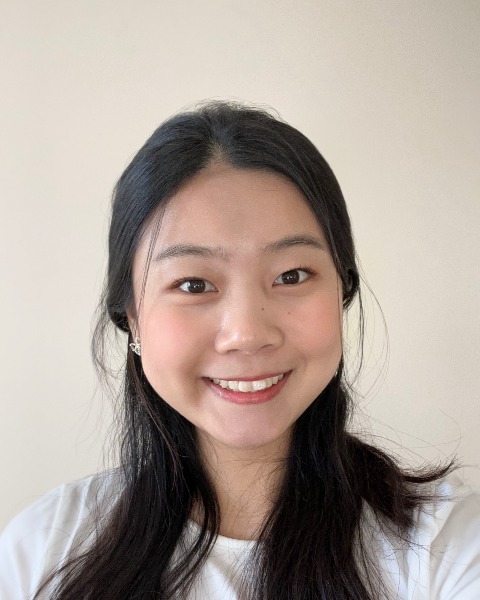Imaging Posters
Poster: Imaging Posters
38 - What the Eyes and Forceps Tell: A Multi-faceted Exploration of the Lumbar Sublaminar Ridge
Sunday, March 24, 2024
5:00pm - 7:00pm US EDT
Location: Sheraton Hall
Poster Board Number: 38
There are separate poster presentation times for odd and even posters.
Odd poster #s – first hour
Even poster #s – second hour
Co-authors:
There are separate poster presentation times for odd and even posters.
Odd poster #s – first hour
Even poster #s – second hour
Co-authors:
Kaitlyn Eng - McMaster University; Alia Taqi - McMaster University; Gillian Summers - McMaster University; Megan Laing - McMaster University; Olivia Chung - McMaster University; Brooke DeCarlo - McMaster University; Lyndsay Simmons - McMaster University; Drew Bednar - McMaster University; Bruce Wainman - McMaster University; Yasmeen Mezil - McMaster University

Erica H. Park
McMaster University
Hamilton, Ontario, Canada
Presenting Author(s)
Abstract Body : Introduction and Objectives
The lumbar sublaminar ridge (SLR) may contribute to lateral spinal stenosis but is hidden beneath the vertebral pedicle. Given that visualizing the structure is challenging, haptic perception of the hypertrophied SLR is a practical solution to analyse the SLR structure but it is unclear whether this corresponds to clinical imaging of the area. This study aims to establish whether the haptic perception of the SLR corresponds to imaging and thus improving surgical intervention in spinal stenosis.
Materials and Methods
Spinal blocks comprising T12 to S1 were extracted from 14 soft-fixed cadavers. The lumbar blocks, upon imaging through Computed Tomography (CT) scanning, underwent 3D reconstruction using Amira software (Version 6.3). Following imaging, vertebral bodies were removed to expose the anterior view of the spinal canal and intervertebral foramina. Observations of the SLR were made using haptic and visual evaluations. Haptic sensation was conducted by applying pressure to the SLR using forceps, whereas sagittal and coronal images from CT 3D reconstructions at each vertebral level for each spine guided the visual approach.
Results
The exiting nerve root was observed to cross superficially to the SLR and inferior to the mid-pedicle. The anatomical location of the nerve root revealed that the hypertrophied SLR may trap the nerve at the inferior mid-pedicle, as well as anteriorly, against the vertebral body. Preliminary findings with 8 spines indicate that the integration of the muti-faceted approach offers a greater appreciation for the variability present at each SLR. Among examined spines, 89% of SLRs were accurately assessed with high degree of consensus between visual and haptic approaches. Consensus was defined by 80% of independent observers reaching agreement.
Conclusion
Upon extraction of the lumbar spine through dissection, haptic and visual characterizations were used to identify the presence or absence of the SLR. The use of both sensations confirms the presence or absence of the ridge with a high degree of reliability, supporting a clinical relevance to this approach for decompression surgeries.
Significance/Implications
Close correspondence between the haptic feedback of the SLR with its 3D reconstruction presents an exciting opportunity to enhance the learning of SLR anatomy for future physicians and improve lateral spinal stenosis surgery.
The lumbar sublaminar ridge (SLR) may contribute to lateral spinal stenosis but is hidden beneath the vertebral pedicle. Given that visualizing the structure is challenging, haptic perception of the hypertrophied SLR is a practical solution to analyse the SLR structure but it is unclear whether this corresponds to clinical imaging of the area. This study aims to establish whether the haptic perception of the SLR corresponds to imaging and thus improving surgical intervention in spinal stenosis.
Materials and Methods
Spinal blocks comprising T12 to S1 were extracted from 14 soft-fixed cadavers. The lumbar blocks, upon imaging through Computed Tomography (CT) scanning, underwent 3D reconstruction using Amira software (Version 6.3). Following imaging, vertebral bodies were removed to expose the anterior view of the spinal canal and intervertebral foramina. Observations of the SLR were made using haptic and visual evaluations. Haptic sensation was conducted by applying pressure to the SLR using forceps, whereas sagittal and coronal images from CT 3D reconstructions at each vertebral level for each spine guided the visual approach.
Results
The exiting nerve root was observed to cross superficially to the SLR and inferior to the mid-pedicle. The anatomical location of the nerve root revealed that the hypertrophied SLR may trap the nerve at the inferior mid-pedicle, as well as anteriorly, against the vertebral body. Preliminary findings with 8 spines indicate that the integration of the muti-faceted approach offers a greater appreciation for the variability present at each SLR. Among examined spines, 89% of SLRs were accurately assessed with high degree of consensus between visual and haptic approaches. Consensus was defined by 80% of independent observers reaching agreement.
Conclusion
Upon extraction of the lumbar spine through dissection, haptic and visual characterizations were used to identify the presence or absence of the SLR. The use of both sensations confirms the presence or absence of the ridge with a high degree of reliability, supporting a clinical relevance to this approach for decompression surgeries.
Significance/Implications
Close correspondence between the haptic feedback of the SLR with its 3D reconstruction presents an exciting opportunity to enhance the learning of SLR anatomy for future physicians and improve lateral spinal stenosis surgery.

